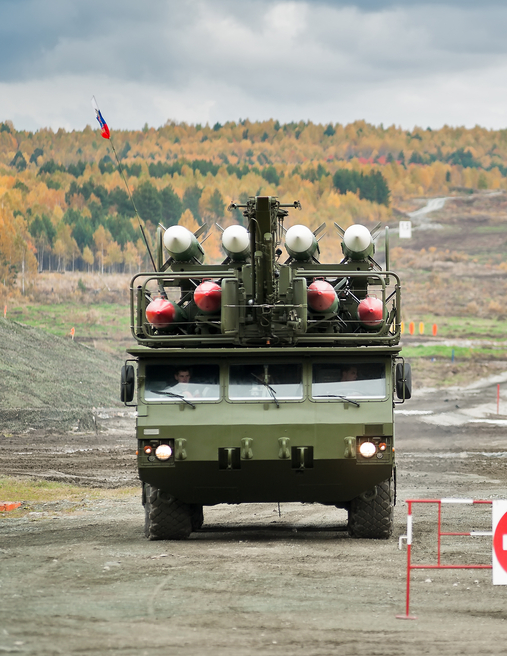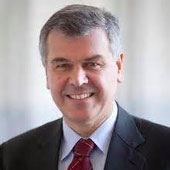Not Cold War II, But Toward World War III?
Putin is not the only problematic character on the global stage.
November 15, 2014

Russia’s leadership has returned to its traditional political thinking — imperial, nationalistic, aggressive. It is not pursuing a transformation toward Western ways, as had been hoped for a while. Instead, it is embracing a new version of “reactionary modernism” (in the words of Jeffrey Herf).
Such a peculiar form of modernism is something we have seen already under Nazi rule in Germany in the 1930s. In Putin’s Russia, “reactionary modernism” is coupled with revisionist aspirations to expand Russia’s sphere of influence on the Eastern borders of Europe.
As for the latest outbreak of Russian imperialism, some argue that this chain of events is apt to usher in a new Cold War. That proposition is wrong — for a very obvious reason: The Cold War has never turned violent, except for moments of unrest inside the Eastern bloc.
That makes it much unlike the series of events we have seen since the end of the Soviet Union in 1990: From Chechnya to Transnistria, from South Ossetia to Abkhazia, from Crimea to Donbass, we have seen hot warfare by old and new means.
To be sure, the ideological source of today’s set of conflicts is no longer rooted in past totalitarianism. Instead, it lies primarily in the geopolitical objectives of Russia: Eurasian nationalism has become the source of a new zone of blood, instability and uncertainty at the fringes of Russia.
Regionalism by coercion — as Putin tries to implement with his project of the Eurasian Union — will not work either.
Putin and the Arab world
But Putin is not the only problematic character on the global stage. On Europe’s southern borders, the Arab spring has not turned into the hoped-for democratic Arab summer.
Even the much harsher metaphor currently bandied about — that of a Caliphate winter — is misleading.
In reality, the Arab world is going through a set of revolutions. By definition, they come in stages, go through phases and remain unpredictable until the end.
Recognizing Arab diversity and accepting new forms of power sharing and identity tolerance will take a long time.
The reason why is quite simple: What needs to happen is that this part of the world has to discover either the recipe Thomas Hobbes provided for a solution to sectarian wars, which is the primacy of the law over any claim of representing “truth.”
Or it has to embrace Max Weber’s notion about peace based on a monopoly of the legitimate use of state violence. Saying so is not a form of cultural or historical chauvinism.
The two approaches basically describe the two only logical and effective choices — when viewed from a purely anthropological, not political, ideological or religious perspective.
Unless and until one of those happens, we will experience privatized violence and terrorism, uncertainty and instability.
Not another Cold War
The Cold War came as one global conflict, uniting and dividing the world at large. Today’s conflicts originate in multiple domestic anarchies, governance and state failures.
As a consequence, however, they are no less powerful and scary. They repeat conflicts that Europe has unlearned. And they have led to a robust mixture of cold and hot wars, frozen and overt conflicts, especially across the arc of instability from Morocco to Moscow.
If we add the territorial and power disputes in the South China Sea, as well as the root causes of Ebola (which are not medical, but the consequence of state failure in the countries of origin), then we suddenly realize the expanding global nature of the series of escalating conflicts.
The only certain fact is only that Europe is no longer origin, source and center of current conflicts. If one adds the number of victims of political violence since the end of the Cold War outside Europe, the gruesome impression that we are going through World War III appears in front of our eyes:
1. More than 157,000 people were killed in acts of terrorism since 1990.
2. Up to nine million people have lost their lives in acts of civil war around the globe.
The statistics of violence since the end of the Cold War are getting us closer to the legacy of World War I with its 17 million dead than to anything the world experienced during the Cold War.
A new Thirty Years War
Like both World War I and World War II, the new series of global confrontations do not take place in all regions, all countries or all villages at the same time.
Like the Thirty Years War of the 16th century, the budding World War III has already seen so far periods of armistice and recovery, only to prepare for the next round of shooting, looting and killing elsewhere.
And World War III includes cold wars and hot wars, old wars and new forms of violence for political ends.
It is a new Thirty Years War — and comes as the downside cost of the global age. Unlike the presumable upside — expressed by the gadgets of communication and gentle economic power shifts — its currency is shifts in power relations due to war and violence.
The new conflicts are fought less over territorial claims per se — and far more over basic notions of politics, the management of public affairs as well as identity and diversity management.
Curiously enough, in some parts of the world, the fight is over having too many states, while in others it is fought over the lack of states for some groups.
Takeaways
The last time before Putin the world was treated to “reactionary modernism” was under Nazi rule in Germany.
Regionalism by coercion, which Putin tries to implement with his project of the Eurasian Union, will not work.
There is an arc of instability, reaching from Morocco to Moscow.
World War III is a new Thirty Years War -- and comes as the downside cost of the global age.

